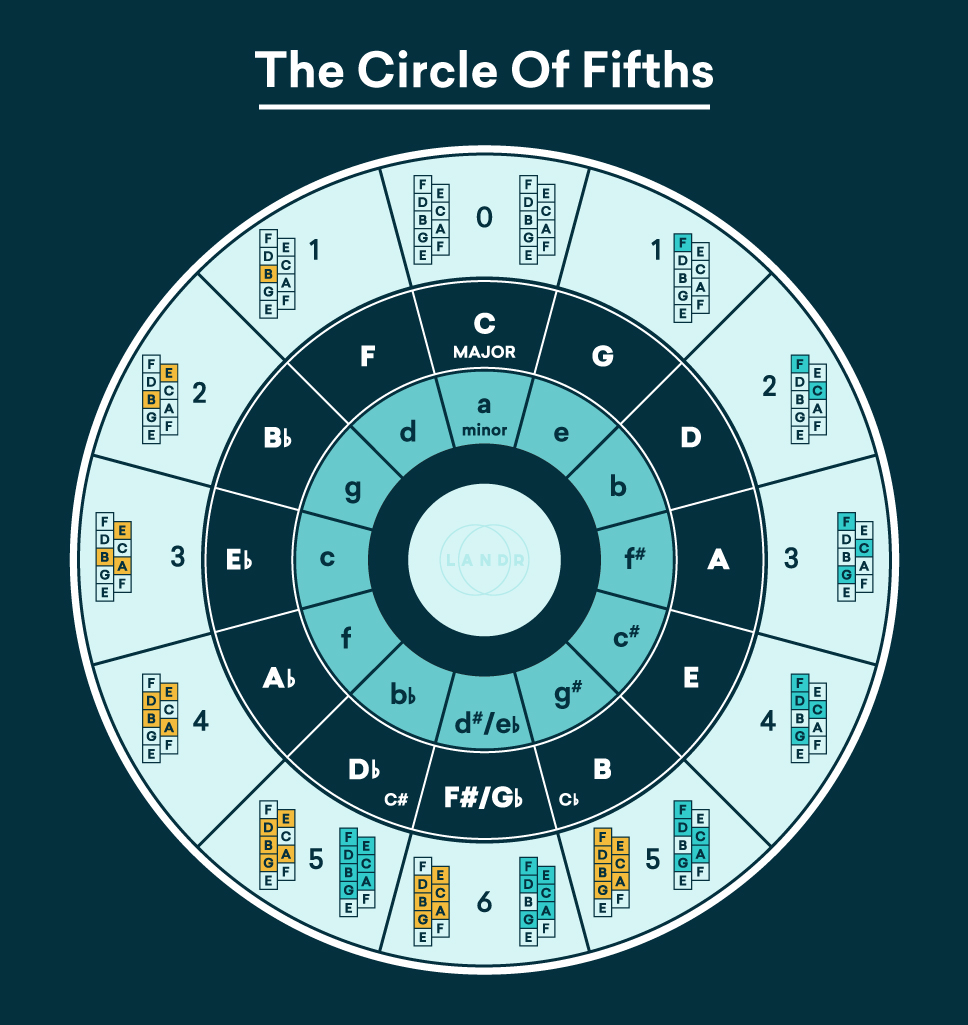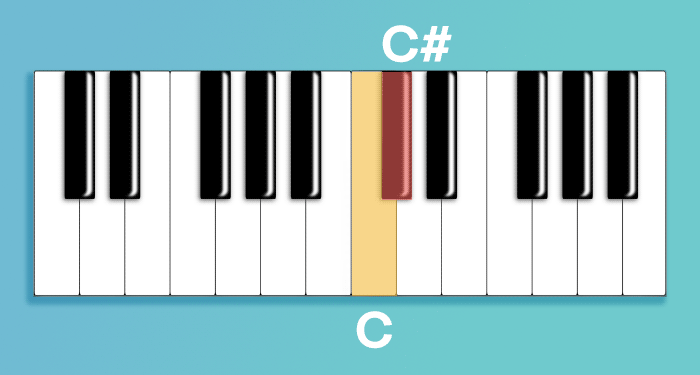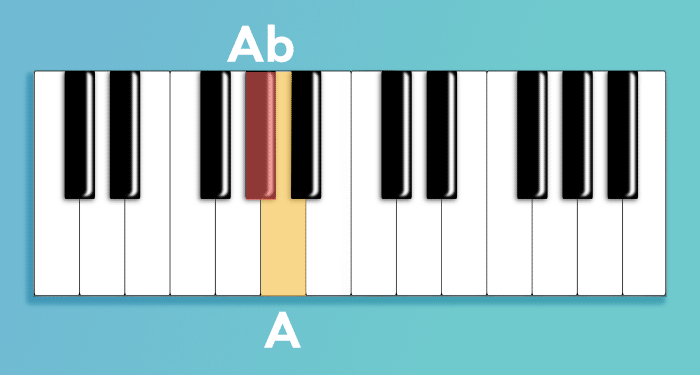In this article, I’ll clarify what the circle of fifths is, the way it works, and the way it might help you make music. Let’s get began.
What’s the circle of fifths?
The circle of fifths is a technique to visualize the twelve musical keys and put them in a convenient order.
It’s utilized in music to assist to keep in mind the notes that make up every key and group comparable keys primarily based on the notes that they share.
Following the steps of the circle order may also provide the order of sharps and flats for writing musical scores.
It’s known as the circle of fifths because each key’s organized the fifth interval away from the subsequent on the circle.
If that sounds tough to visualize, let’s clear it up with an infographic:
Background information—notes and keys
In case you already got the basics of music theory down, feel free to skip forward to the subsequent part.
However, for those who’re new to it, you’ll want a quick recap of the basics to get the most from this article.
Keys in music
A musical key’s the group of seven notes that type the idea of a musical composition.
Utilizing the notes inside the key in your chords, melodies, and progressions will ensure all of your musical components sound pleasing collectively.
The key signature is the set of accidental symbols that defines which pitches are included in the key. There are 12 of those—one for every key on the musical keyboard.
Accidentals
The octave is split into equal-tempered semi-tones, however, there are solely six notes within the musical alphabet.
Accidentals are the symbols used to change the letter pitches by a semitone up or down.
For instance, adding the # symbol to C will create C#—one half-step higher.
And adding the flat symbol to A will create Ab—one half-step lower.
That may appear complicated. However, remember which accidentals are required for which keys are enormous motive musicians use the circle of fifths.
How does the circle of fifths work?
The circle of fifths arranges the musical keys by the variety of accidentals of their key signatures.
Moving right on the circle
In case you’ve heard some music idea basics, you probably know that the key of C main contains no sharps or flats.
In case you begin with the key of C main and transfer up by a fifth, you’ll land on G major.
The key of G main comprises a single accidental—F#. As you proceed to move clockwise by fifth intervals across the circle, you’ll add a pointy with every step.
How do you know which sharp to add? That’s on the circle as properly!
The order of sharps begins one step to the left of C main and follows the identical sample, though most musicians keep in mind it with a mnemonic.
The one I use is: Father Charles Goes Down And Ends Battle
Moving by fifths and adding a pointy every time gives you all of the keys that comprise sharps of their key signature—up to C# major with its whopping 7 sharps!
Moving left on the circle
So far we’ve covered the sharp keys, however what if you want to play in Bb major?
To seek out the keys with flats on the circle of fifths you’ll begin the identical approach at C major, however, transfer counterclockwise as a substitute.
This time you’ll transfer down by a fifth and add a flat at every step.
You should utilize the identical mnemonic to remember the order of flats, which conveniently is smart in reverse—Battle Ends And Down Goes Charles Father
In our instance, to search out Bb you’ll have to move left two steps, adding two flats to the key signature—Bb and Eb!
You possibly can continue like this all the way in which to Cb major which contains 7 flats.




